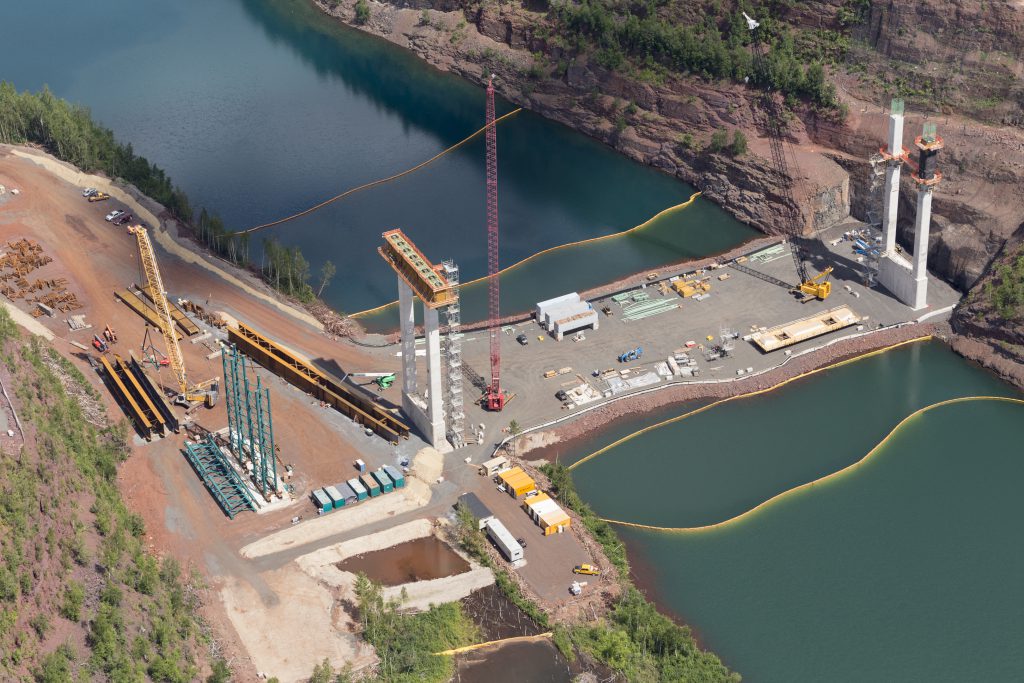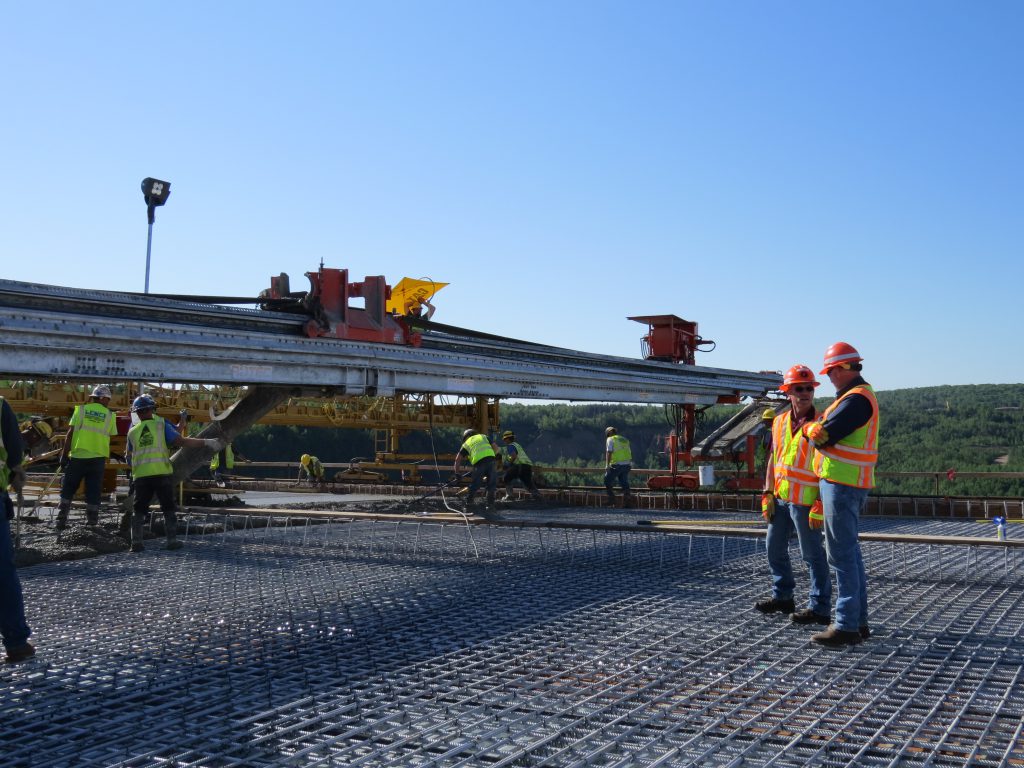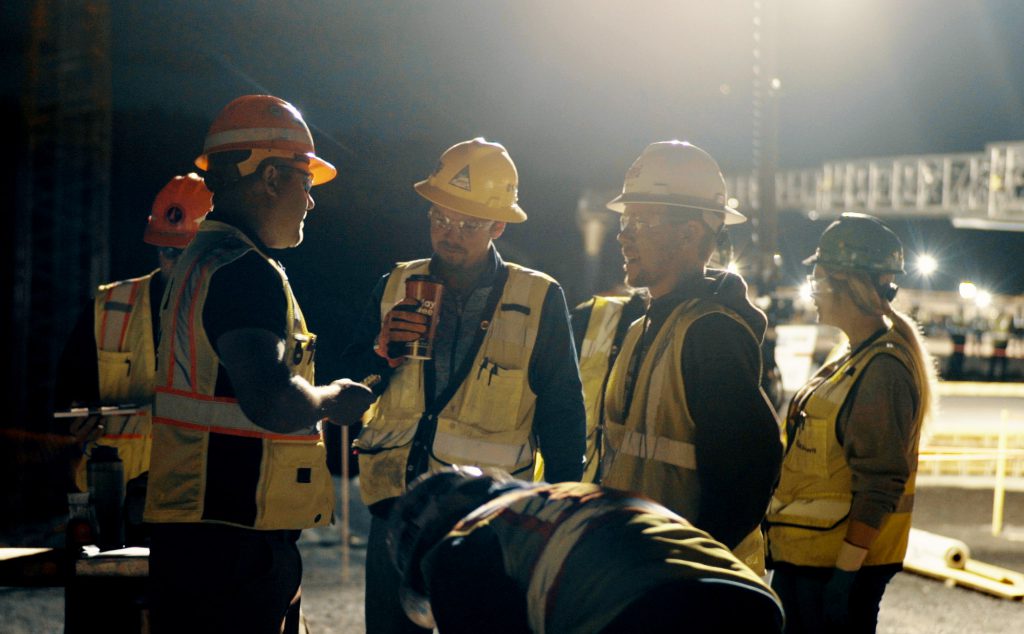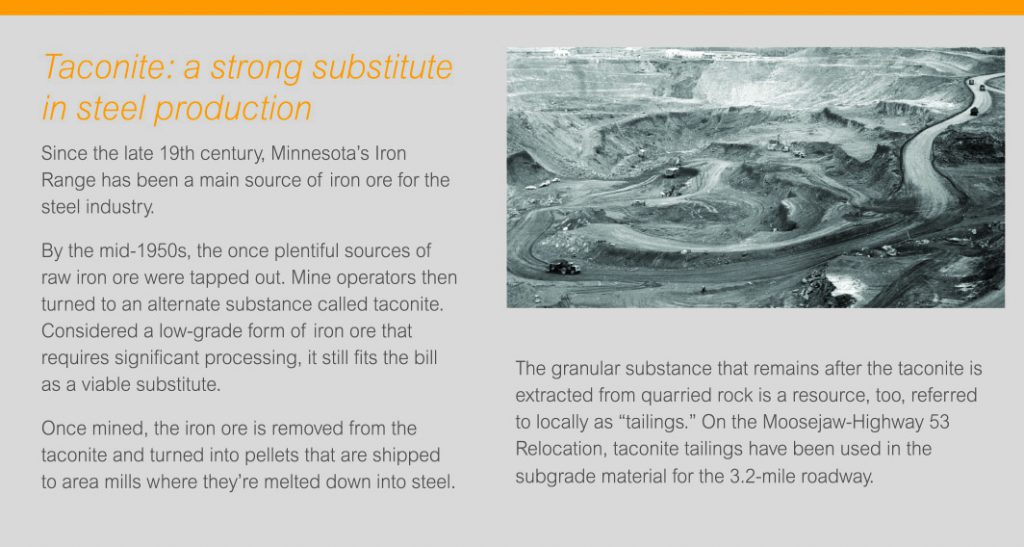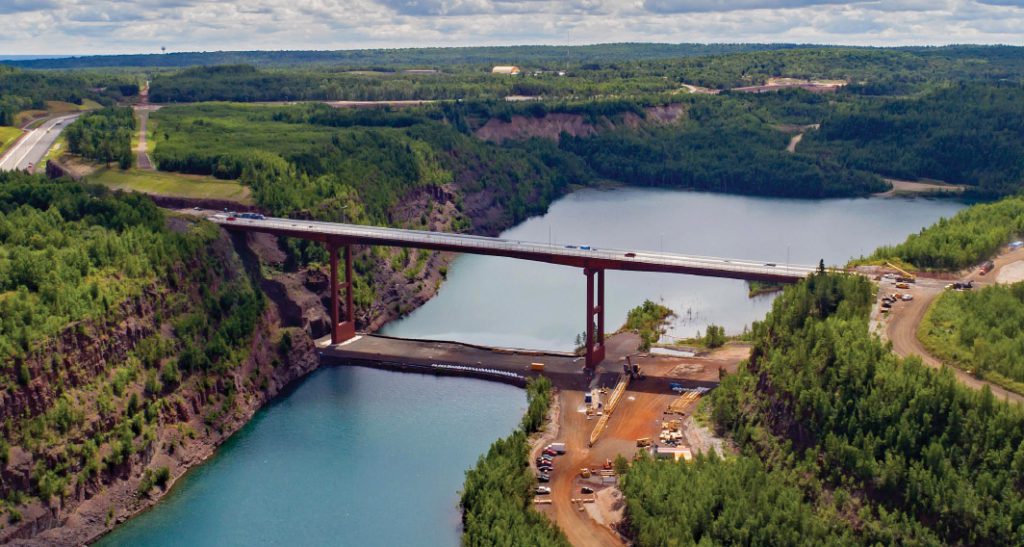Highway 53 Relocation team implements rock-solid solutions
For Kiewit’s staff and crews working in the Minnesota Iron Range, the checklist for their latest contract has grown to be anything but ordinary.
Relocate a three-plus-mile highway without disrupting traffic. Check. Build the Minnesota Department of Transportation’s tallest bridge over an abandoned mine pit. Check. Work through snowy, windy winters as well as some of the wettest summer months the area has seen in recent years. Check. Rescue a lost golden retriever. Check.
The Kiewit employees working on the Moosejaw-Highway 53 Relocation project have demonstrated their ability to anticipate changes and handle the unexpected without compromising safety and schedule — and implement some innovative ideas along the way.
Moving a road, mining new possibilities
Located between the towns of Virginia and Eveleth in northern Minnesota, the existing stretch of four-lane Highway 53 has been a critical roadway for citizens and commerce since 1960.
It sits in the heart of the state’s mining country, a site with sources of iron ore still waiting to be unearthed. An agreement between iron mining interests and the Minnesota Department of Transportation (MnDOT) required MnDOT to move the road if the mining company wanted to access the untapped ore.
Current mining interests exercised their right to the land in 2010; both parties agreed to move the right-of-way by the end of this year. MnDOT now owns the mineral rights to the land where the new roadway and bridge sit.
From water to land
The Moosejaw-Highway 53 Relocation is the first MnDOT project for Kiewit and is a collaboration between many parts of its business.
Even before winning the bid, Kiewit had a CMGC (Construction Manager-General Contractor) pre-construction contract to provide constructability reviews, risk workshops, schedules and cost estimates, and where appropriate, incorporate innovation into the design.
The team’s experience and ability to look at the project from a different angle proved valuable in coming up with a solution for how to access the bridge site, located over the abandoned Rouchleau Mine.
“We had 200-foot-high rock faces on either side of the bridge and a 120-foot-deep water body, so access was a huge challenge,” said Jim Thomsen, project manager.
“Whenever you’re on water with that type of height, along with 750,000-pound girder lifts, there’s a high degree of risk.”
After going through several iterations of access schemes and plans for how to erect the girders, Kiewit changed the definition of the job itself: Once a marine job, it would now be a land job.
By building a 170-foot permanent causeway under the bridge, crews would have a stable platform from which to work — one that would provide safe access in the future for MnDOT crews, too.
Pat Huston, MnDOT project director, said the solution benefits MnDOT for the long-term maintenance and operation of the bridge.
“We’re always going to have to go down and maintain the east pier. Except by using a boat, we really have no way of getting there without that access. In hindsight, we can’t imagine constructing this job without that causeway.”
Working around weather
Contract work for the $156-million job began in November 2015 with a contracted completion date in November 2017. Given the aggressive schedule, the team hit the ground running, said Bill Marshall, project engineer.
“We literally started moving dirt three days after receiving the award. When we sit back and realize the amount of work that’s gotten done, including erecting 10.5 million pounds of steel throughout the winter, we think about the amount of coordination it’s taken to get us where we are today and do it ahead of schedule.”
Throughout the project, the crew has worked in challenging weather conditions. Not the least of which have been the sub-zero temperatures — as low as 40 degrees below zero during some typical Minnesota winters — and uncommonly wet springs and summers that have drenched the work sites and crews.
“These conditions caused us to really work every shift that we could, including double shifts and on weekends,” Marshall said.
Inspired by Kiewit’s safety commitment
Despite the challenges, the Kiewit team has worked with an eye on meeting a tight deadline and doing it safely.
“Working with the community and the unions, following the Kiewit Safe attitude and making sure nobody got hurt” have been priorities for the team, said Thomsen. “We spent time talking to the local folks to get an understanding of what it’s like to work in that environment.”
MnDOT has been impressed by the Kiewit commitment to safety, Huston said — so much so that they are applying similar procedures in their organization.
“The safety has been outstanding. We’re engaging Kiewit in helping us take the lessons learned on how they have changed their safety culture over the years so we can improve ours.”
Going above and beyond
And, as for those unexpected to-dos on the checklist, one of the more satisfying might be rescuing a golden retriever named Hat Trick. His owner is a former NHL player who lives in Virginia.
“The dog got lost on the trail and wound up following the edge of the mine pit, where he started wandering down behind our rock fall protection,” Marshall said.
“He got about halfway down the hill — about 200 feet of vertical rock face — when one of our crew spotted him. He hurried over in the manlift and brought him back down to safety. We checked his tags and called the owner.”
It’s one more way the Kiewit team has demonstrated its core values to MnDOT and everyone in the community.
Did MnDOT know in its first meetings with the team that going above and beyond was just part of how Kiewit does business?
“We did, but it didn’t really register until later,” said Huston. “For me personally, at the beginning I didn’t know if it was just talk. I needed to see it. And we’ve all continued to see it, steadily. They’ve honored every commitment they’ve made.”
